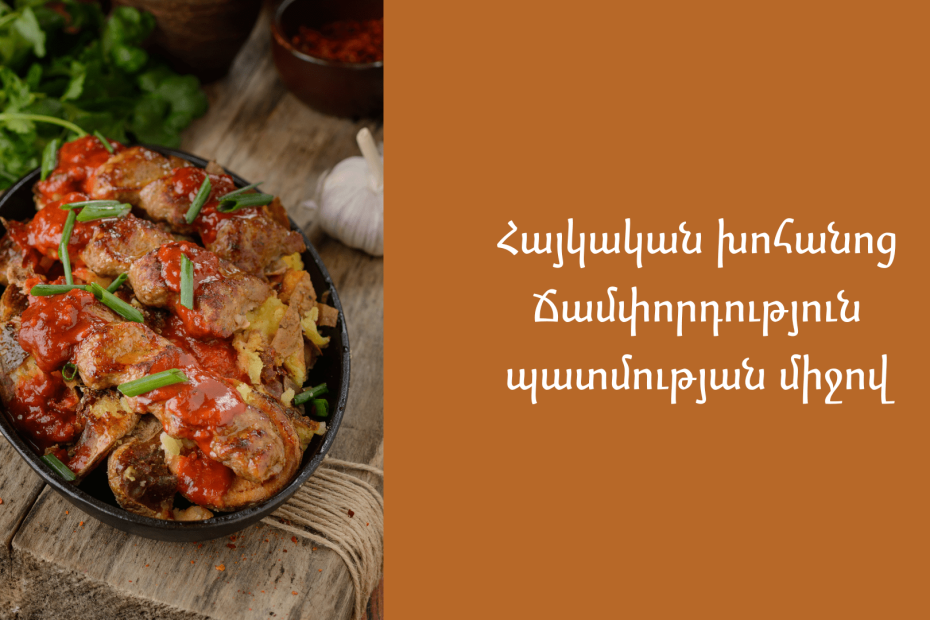Table of Contents
Introduction to Armenian Cuisine
Armenian cuisine has a long, storied history stemming from the ancient Kingdom of Armenia. It has been influenced by Greek, Persian, Turkish, and Levantine cuisines over the centuries, incorporating flavors and ingredients from its neighbors. There are also distinct regional styles and specialties.
The cuisine relies on fresh, seasonal ingredients like fruits, vegetables, grains, nuts, fish, poultry and red meats. Herbs like mint, cilantro, dill, basil and parsley are used abundantly, as are spices like cumin, coriander, cinnamon and pepper.
Common Dishes and Ingredients
Bread, dairy products and produce form the base of many Armenian meals.
Lavash is the quintessential Armenian flatbread. It comes in several varieties, from thin and soft to thick and flaky. Lavash is folded up with cheese or greens inside for quick wraps.
Cheeses like panir (a fresh, unsalted cheese) and string cheeses are commonly incorporated into appetizers, salads and bakes.
Yogurt, known as madzoon, is served alongside many dishes or used in marinades and sauces. The signature yogurt soup, spas, features madzoon mixed with chopped herbs and rice.
Seasonal fruits and vegetables like tomatoes, peppers, eggplants, grapes, apricots, apples and pomegranates are enjoyed fresh or cooked into various dishes.
Herbs and spices like garlic, mint, dill, cumin, fenugreek, saffron and pepper provide distinctive seasoning.
Meats like lamb, beef and chicken are typically grilled and served with a variety of pilafs, vegetables or relishes. Pork is not traditionally used.
Signature Dishes
Some iconic Armenian dishes reflect the cuisine’s diverse flavors and creativity.
-
Dolma refers to vegetables like grape leaves, cabbage, peppers or eggplants stuffed with rice and minced meats.
-
Khorovats features chunks of marinated meat grilled on a skewer over an open flame. It’s often considered the national dish.
-
Harissa is a hearty porridge made from boiled wheat and meat topped with caramelized onions and herbs.
-
Ghapama is a vegetarian pumpkin stew stuffed with rice, dried fruits and nuts.
-
Khash is a warming soup made from stewed cow’s feet and herbs.
Desserts and Drinks
Armenian sweets represent the cuisine’s penchant for pastry, nuts and honey.
-
Gata is an Armenian sweet bread flavored with nuts or cinnamon.
-
Paklava offers flaky filo dough layered with chopped nuts and honey.
Armenia produces brandy from local grapes. The ArArAt Brandy Company is renowned for fine cognacs. Armenia also produces wine, typically from indigenous grapes like Voskehat and Areni.
Coffee is enjoyed Turkish-style after meals, often accompanied by dried fruits and nuts.
Dining Customs and Etiquette
Armenians often share their meals communally, with multiple dishes laid out family-style. Elders are served first as a sign of respect.
Toasts with wine or brandy frequently accompany meals. Glasses are raised for every toast. It’s customary to wait until late in the meal to make the first toast.
Using your left hand at the table is considered impolite. When finishing a meal, it’s polite to leave a bit of food on your plate. This shows you are satisfied.
Celebrations and Feasts
Armenian celebrations feature special, abundant spreads of food and drink.
Birthdays might include dolma, khorovats, pilaf, yogurt, cake and coffee served to guests.
Weddings traditionally involve a lamb slaughtered by the groom before the ceremony. Guests feast on shish kebab, fish, harissa, fruits and sweets.
Major religious holidays like Easter and Christmas call for spas (yogurt soup), roasted fish, rice, dried fruits and pastries.
Regional Differences
Regions of Armenia offer their own unique dishes and ingredients.
Yerevan cuisine shows European and Middle Eastern influences. Khashlama (boiled meat stew) and kyufta (meatballs) are popular.
Lori cuisine from the northern province features khorovats, dried fruits, mountain herbs and stews slow-cooked in clay pots.
Syunik cuisine in the southeast highlights fish from mountain lakes. Trout and sig (whitefish) are prepared over open fire or in earthenware casseroles.
Armenian Cuisine Abroad
The Armenian diaspora has brought the cuisine across the globe. Markets and restaurants serve specialties to Armenian communities. Outside Armenia, lentils, bulgur and sesame are more common.
The cuisine has influenced neighboring Middle Eastern and Balkan cuisines, while incorporating Levantine spices and Turkish techniques like doner and baklava.
Conclusion
Armenian cuisine offers a culinary journey full of diverse flavors. Ancient traditions blend with foreign influences to produce iconic staples and celebratory feasts. Regional variety provides a tapestry of tastes tied to Armenia’s landscape and culture. Whether at home or abroad, Armenian cuisine delivers savory satisfying meals and sweet hospitality.
FAQs
What are some key ingredients in Armenian cuisine?
Some key ingredients include breads like lavash, dairy like yogurt and cheeses, herbs like cilantro and mint, fruits and vegetables like eggplant and apricots, and meats like lamb and beef.
What is a typical Armenian breakfast?
A typical Armenian breakfast consists of breads, cheese, jam, eggs, and tea or coffee. Fried eggs with toast, cheese and fresh tomatoes are common.
What are some traditional Armenian desserts?
Popular Armenian desserts include pastries like baklava and gata, dried fruits and nuts, and dairy-based treats like fried doughnuts soaked in honey.
What do Armenians drink?
Armenia is known for brandy production. Armenians typically drink wine, brandy, beer, and mineral water with meals. Tea and Turkish coffee are popular after meals.
What is the most famous Armenian dish?
Khorovats, consisting of grilled marinated meat with vegetables, is considered the national dish of Armenia. Lavash bread and yogurt-based soups are also iconic.
